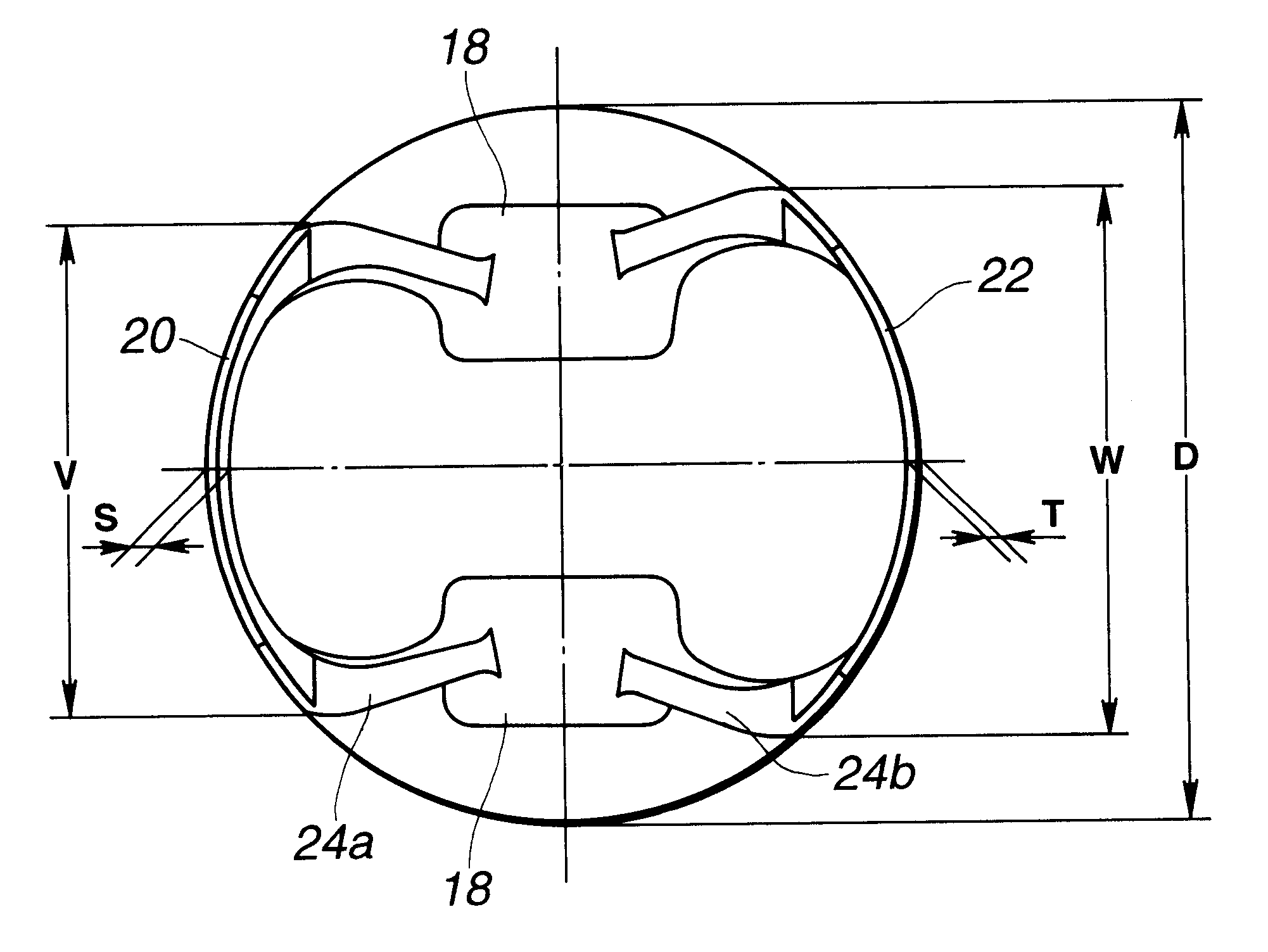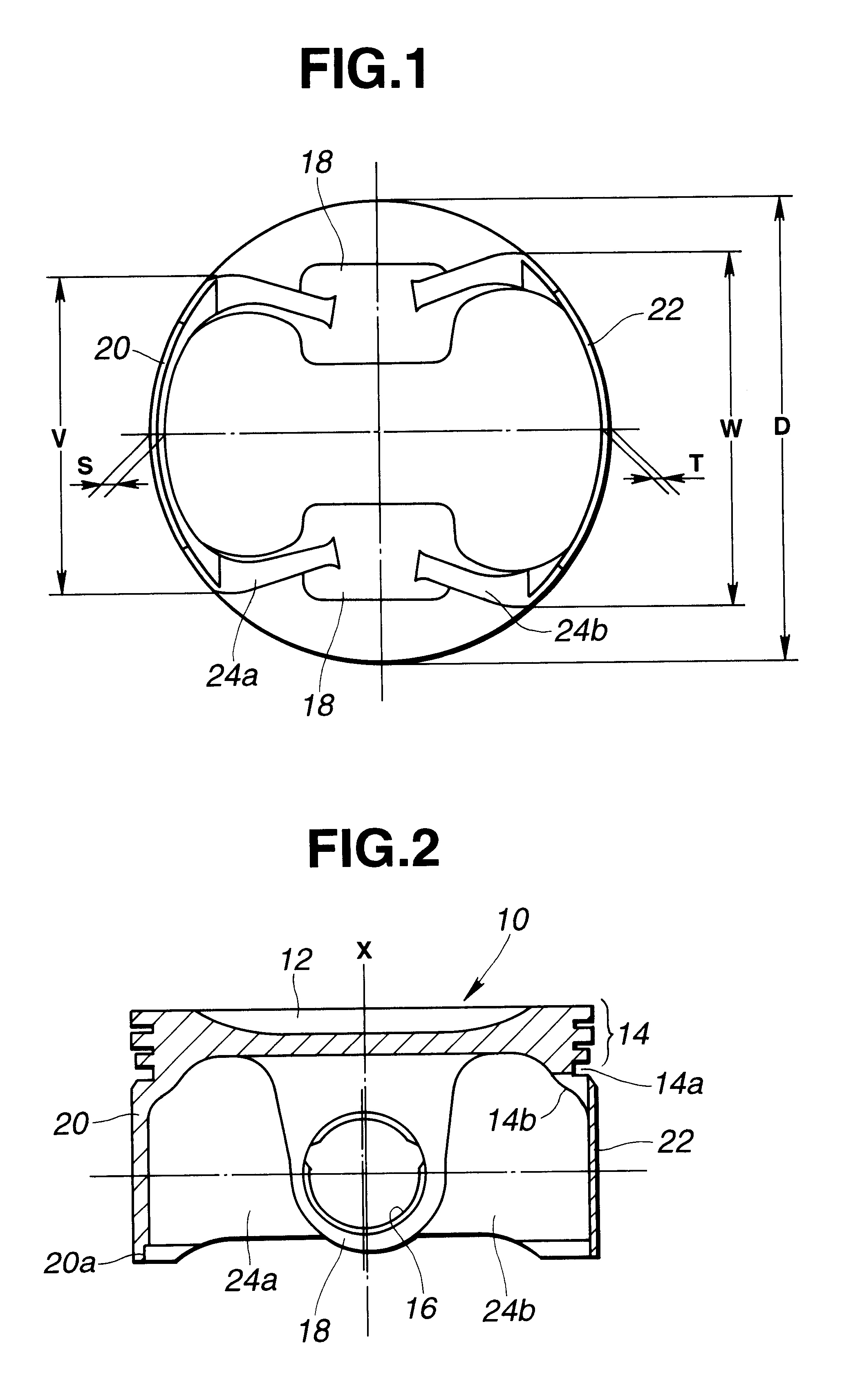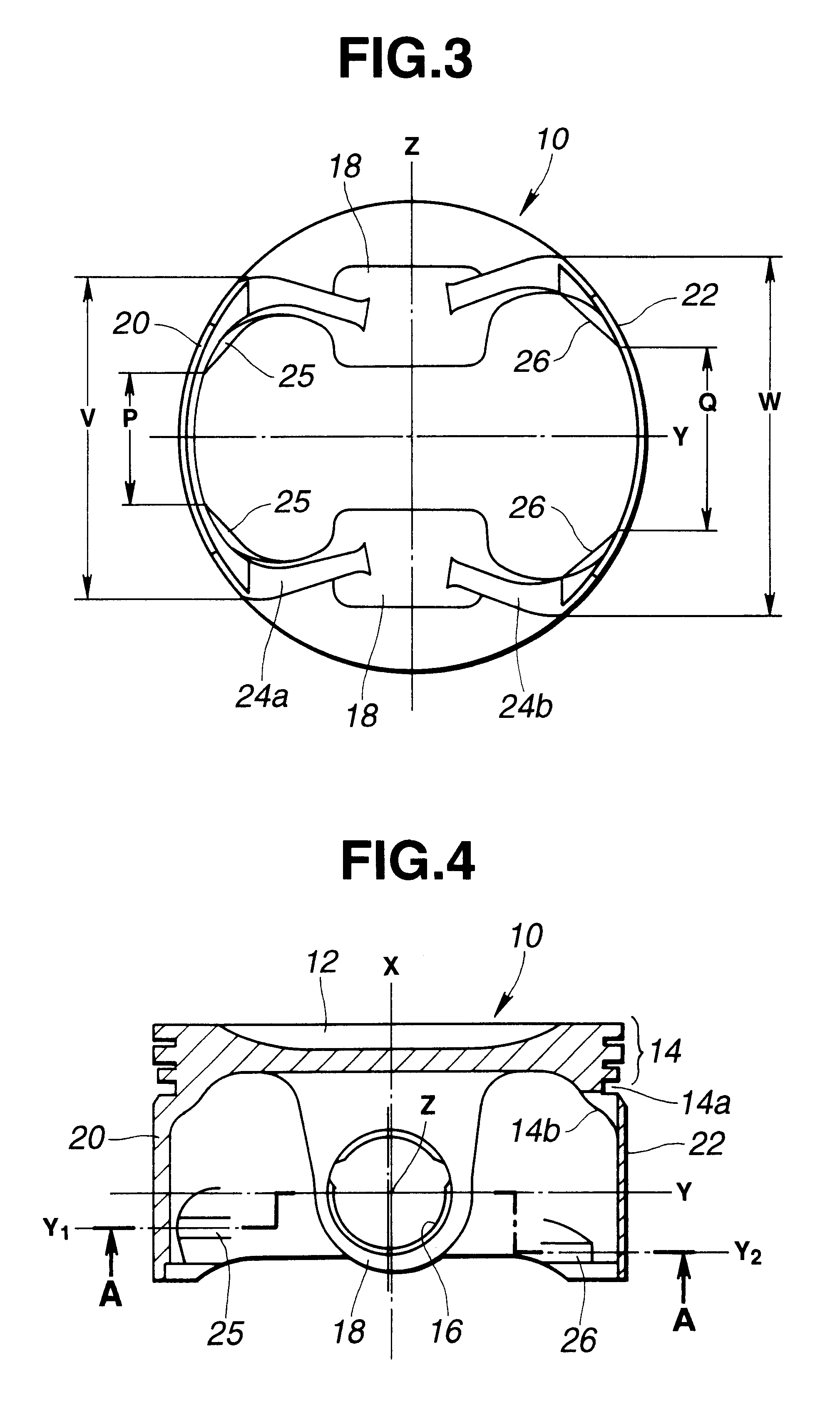Piston of internal combustion engine
a reciprocating piston and internal combustion engine technology, which is applied in the direction of trunk pistons, machines/engines, plungers, etc., can solve the problems of increasing the power loss of an internal combustion engine, the piston is always subject to very severe circumstances, and the temperature gradient from the top of the piston to the bottom, so as to reduce the friction coefficient and reduce the friction
- Summary
- Abstract
- Description
- Claims
- Application Information
AI Technical Summary
Benefits of technology
Problems solved by technology
Method used
Image
Examples
Embodiment Construction
Referring now to the drawings, particularly to FIGS. 1 and 2, a piston 10 of the embodiment is formed into a substantially inverted cup-like shape. The piston 10 of the first embodiment comprises a piston crown portion or a piston head portion 14 constructing a top face of the piston, a pair of piston pin-boss portions (18, 18), a major-thrust-side skirt portion 20, a minor-thrust-side skirt portion 22, and web-like apron portions 24a and 24b. The piston pin-boss portions (18, 18) are located on the underside of the piston crown portion 14, and integrally formed with the piston crown portion so that the pin-boss portions (18, 18) are spaced apart from each other in the axial direction of a piston pin or a gudgeon pin (not shown). Each of the piston pin-boss portions (18, 18) has a piston-pin bore or piston-pin hole 16 to which the piston pin is loosely fitted. The major-thrust-side skirt portion 20 and the minor-thrust-side skirt portion 22 are formed integral with the piston crown ...
PUM
 Login to View More
Login to View More Abstract
Description
Claims
Application Information
 Login to View More
Login to View More - R&D
- Intellectual Property
- Life Sciences
- Materials
- Tech Scout
- Unparalleled Data Quality
- Higher Quality Content
- 60% Fewer Hallucinations
Browse by: Latest US Patents, China's latest patents, Technical Efficacy Thesaurus, Application Domain, Technology Topic, Popular Technical Reports.
© 2025 PatSnap. All rights reserved.Legal|Privacy policy|Modern Slavery Act Transparency Statement|Sitemap|About US| Contact US: help@patsnap.com



